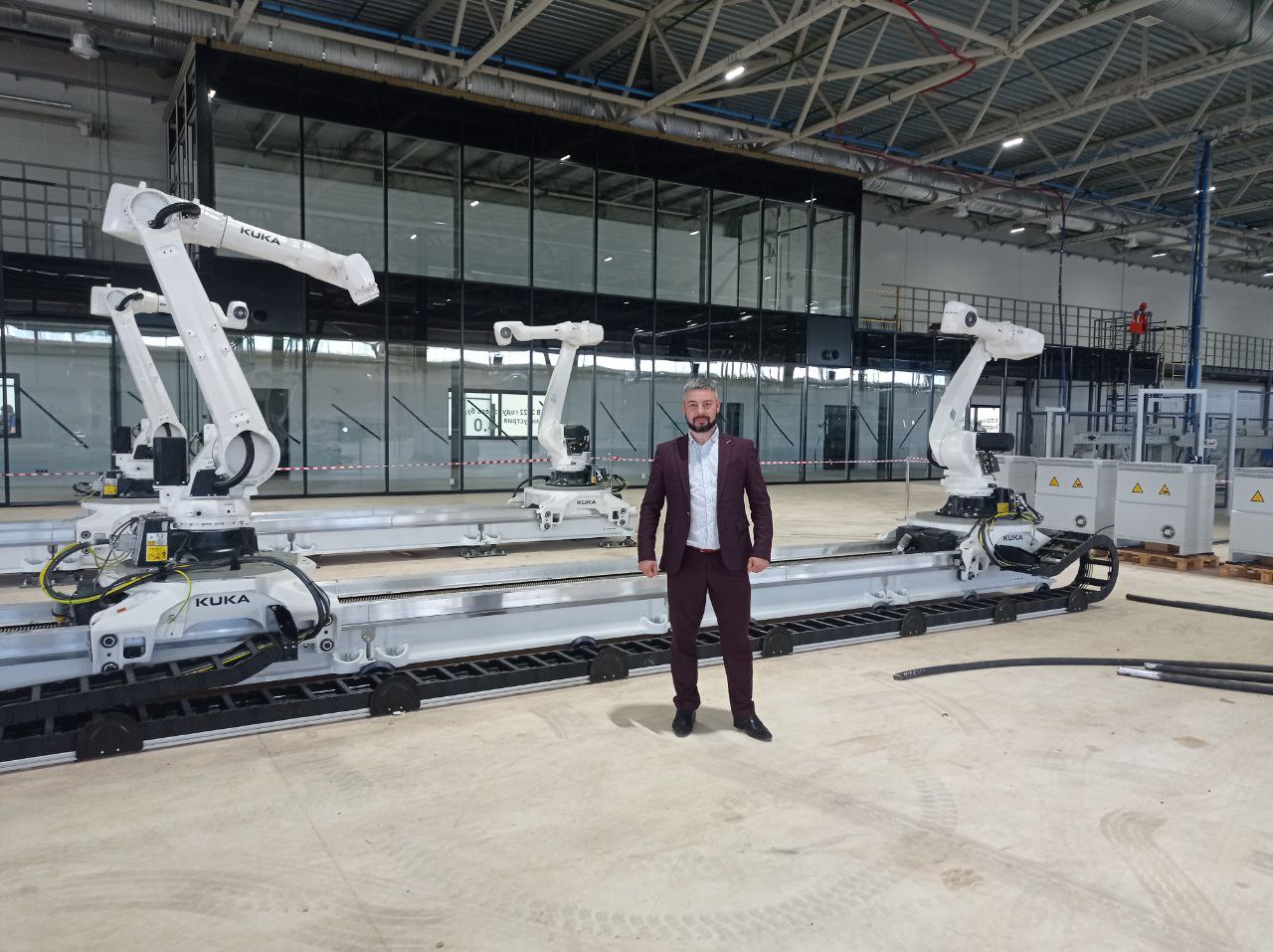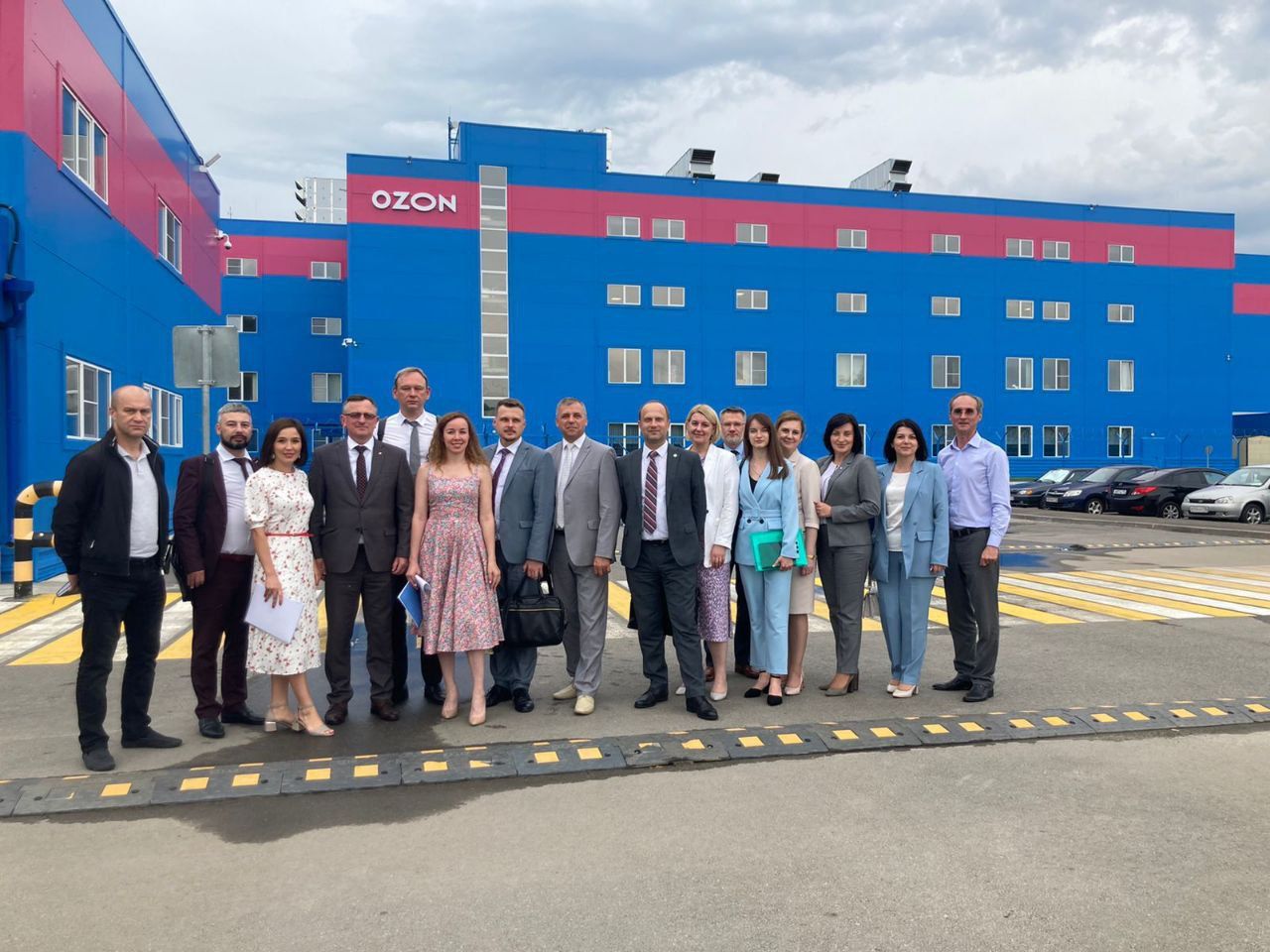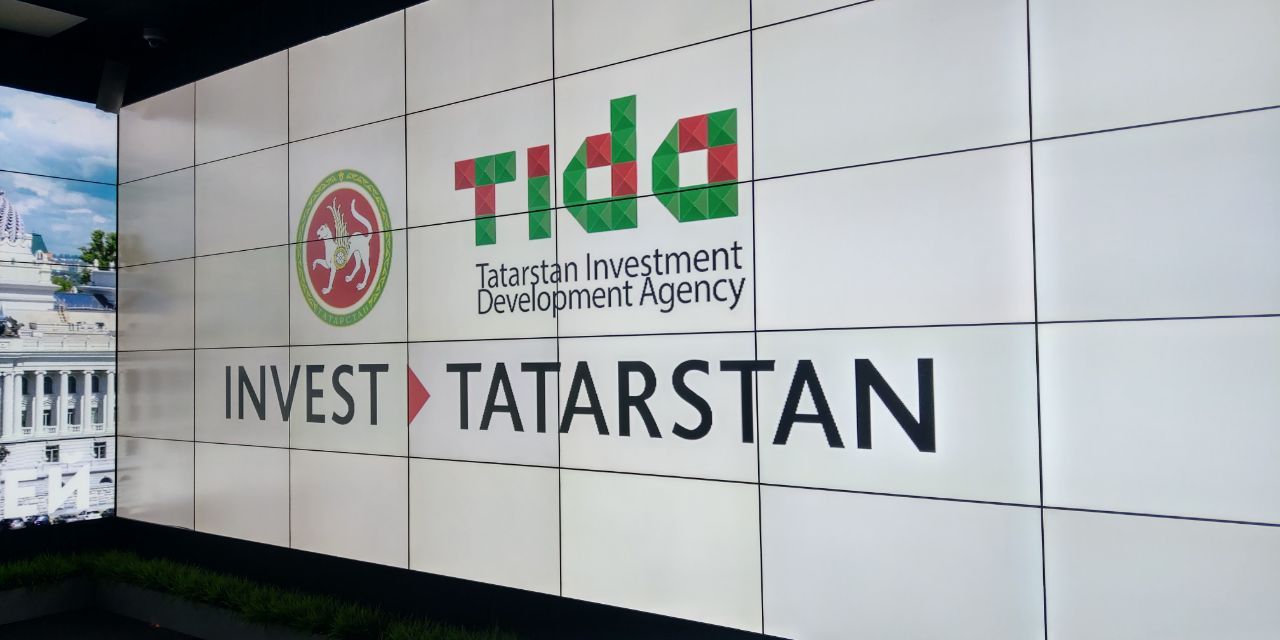26.07.2022
National Agency of Investment and Privatization specialists organized a visit of Belarusian delegation to Kazan, the Republic of Tatarstan. Russia's experience in creating industrial parks is very interesting for our country because Belarus is actively seeking investors for the development of 11 industrial centers, located at regions with a population of more than 80 thousand people. The Head of Regional Development Department Alexey Polovikov told the details of the visit and shared his impressions of Russian colleagues' work.

– What was the main purpose of the visit and what tasks did the Agency representatives have?
– The main purpose of our trip was to study the best practices of Tatarstan (and the Russian Federation as a whole) in the field of creating and managing industrial parks. If we talk about the tasks, we conducted benchmarking in narrow areas. For example, Tatarstan side representatives talked about Government support in creating such infrastructure, shared success stories and possible difficulties. It was also important for us to find potential management companies for the implementation of a pilot projects in Pinsk and Baranovichi.
– What was the business program?
– I should note that the program was developed by the National Agency of Investment and Privatization together with the Ministry of Industry and Trade of the Republic of Tatarstan. The most important event was the meeting with the Ministry of Economy of the Republic of Tatarstan and Tatarstan Investment Development Agency. We also visited industrial sites, such as Technopolis "Khimgrad", industrial Park "Zelenodolsk", SEZ "Alabuga" and SEZ "Innopolis". This was especially important because we needed to communicate with practicing experts in this field.
– What experience did Russian colleagues share and how can it be useful for the Republic of Belarus?
– The first thing we noticed was the presence of political will on the part of the top leadership of Tatarstan. The Republic purposefully creates industrial parks, because it sees a high demand of investors for ready-made industrial infrastructure. Investments have been attracted through industrial parks for many years. This format contributes to the creation of jobs and the generation of tax revenues. Key success factors are competent management company, ready infrastructure (both engineering and material) and preferential regime. Specialization of the industrial parks depends on the socio-economic development of a particular region, its industry orientation, as well as on logistics and the availability of personnel. We used to think that investors came mainly to projects that have already been developed and also that ready infrastructure is the most important aspect. Our opinion has changed during the visit and now we understand that a competent management company and the availability of human resources for residents are paramount. By the way, engineering college "Alabuga Politech" is a good example of a source of manpower. It trains personnel directly for enterprises-residents of the special economic zone. Specializations correspond to the needs for advanced technologies and are ahead of the program of state colleges. Moreover, dual training contributes to the full immersion of students in the production cycle. In Belarus, the format of colleges and universities is based mainly on theoretical training, although students receive practical knowledge at enterprises. Therefore, the model of education at the college "Alabuga Polytech" looks very relevant. Take for example BIM design. Now it is gradually starting to appear in Belarus. It is planned that in the future BIM passports of buildings will be used on a par with existing technical certificates and will replace them. Imagine that the college "Alabuga Polytech'' trains specialists who are already able to develop a BIM project at the age of seventeen. I have another very good example of successful strategy training of highly qualified personnel. A team of students manages all the processes of an enterprise in the field of woodworking. And not for free and not even for a scholarship. The salary of college students is about 60 thousand Russian rubles.

– The Agency promotes pilot industrial sites in Baranovichi and Pinsk. What technologies do you think are used in Tatarstan's industrial parks that can be applied specifically in the Brest region?
– We’ve seen several models of parks: greenfield, brownfield and mixed. This makes it possible to choose when developing the concept of our parks. For example, for brownfields, we have enough unused industrial buildings, many of them with a fairly large area, and it would be difficult and expensive for the investor to give them entirely to one resident. The problem can be solved at the expense of the state together with the management company by providing production facilities to several investors at once. This will greatly simplify the entrance and increase the attractiveness for residents, because they will not need to invest in infrastructure and buildings. Also, residents of industrial parks practically do not interact with the external environment. It means that they do not need to visit registration, control, supervisory and other departments themselves because these functions are assumed by the management (service) company. It is very simple and convenient: you do not need to waste time, hire, attract and pay additional employees. Management companies are divided into service and service-development companies. Service companies provide only assistance, maintenance and operation services. Developers also act as a developer, providing services for the construction of turnkey buildings. Also, management companies are often energy agents, receiving income from the maintenance of electric networks and the sale of electricity produced by their own energy sources. There is a significant difference in land law between Belarus and Russia. Russian management companies of the parks can either acquire ownership of land, or resell it or lease it directly to investors (residents). We have no such opportunity in Belarus but there is a very interesting model of construction of ready buildings with "flexible walls" technology. It allows you to change the size of sections at the request of the resident.
– Why are you so interested in Innopolis?
– Innopolis is the first city in the post–Soviet space built specifically for IT specialists. If in Belarus we talk about IT villages in development strategies of various levels, the authorities of Tatarstan were convinced by Singapore developers to create an entire city. Now the SEZ "Innopolis" is the second large-scale Russian project in the field of high technologies after the Skolkovo Innovation Center.

– What are the prospects for developing cooperation with Russian partners?
– Russian business has experience of cooperation with Belarus. But it comes down to attracting certain Belarusian companies to the territory of industrial parks and special economic zones of the Russian Federation. However, almost all the parks and companies that we visited are interested in participating in a pilot project to create industrial parks in the Brest region and in Belarus as a whole. The project of creating industrial parks is aimed at accelerating the development of eleven regions with a population of 80 thousand people or more, approved and supported by the Government. In the optimal outcome, we will build parks in Pinsk and Baranovichi, which will attract residents to create enterprises. As a result new jobs and opportunities will appear. Ideally, this project is scaled to other regions and the whole Republic.
– What will the Agency do next?
– Now we are holding meetings with interested companies and associations. Including repeated ones, which can already be considered a stage of the negotiation process. Next, we are planning to develop concepts for the creation of industrial parks together with the selected management company by October 2022. Also, we want to identify sources of financing and make proposals for finalizing regulatory legal acts. Of course, we would like to start developing design estimates and construction work as soon as possible, at the beginning of 2023. The goal is very ambitious, but the high interest of all participants in the process and the support of the project by the Government of the Republic inspire us with optimism and confidence in our actions.

– What was the main purpose of the visit and what tasks did the Agency representatives have?
– The main purpose of our trip was to study the best practices of Tatarstan (and the Russian Federation as a whole) in the field of creating and managing industrial parks. If we talk about the tasks, we conducted benchmarking in narrow areas. For example, Tatarstan side representatives talked about Government support in creating such infrastructure, shared success stories and possible difficulties. It was also important for us to find potential management companies for the implementation of a pilot projects in Pinsk and Baranovichi.
– What was the business program?
– I should note that the program was developed by the National Agency of Investment and Privatization together with the Ministry of Industry and Trade of the Republic of Tatarstan. The most important event was the meeting with the Ministry of Economy of the Republic of Tatarstan and Tatarstan Investment Development Agency. We also visited industrial sites, such as Technopolis "Khimgrad", industrial Park "Zelenodolsk", SEZ "Alabuga" and SEZ "Innopolis". This was especially important because we needed to communicate with practicing experts in this field.
– What experience did Russian colleagues share and how can it be useful for the Republic of Belarus?
– The first thing we noticed was the presence of political will on the part of the top leadership of Tatarstan. The Republic purposefully creates industrial parks, because it sees a high demand of investors for ready-made industrial infrastructure. Investments have been attracted through industrial parks for many years. This format contributes to the creation of jobs and the generation of tax revenues. Key success factors are competent management company, ready infrastructure (both engineering and material) and preferential regime. Specialization of the industrial parks depends on the socio-economic development of a particular region, its industry orientation, as well as on logistics and the availability of personnel. We used to think that investors came mainly to projects that have already been developed and also that ready infrastructure is the most important aspect. Our opinion has changed during the visit and now we understand that a competent management company and the availability of human resources for residents are paramount. By the way, engineering college "Alabuga Politech" is a good example of a source of manpower. It trains personnel directly for enterprises-residents of the special economic zone. Specializations correspond to the needs for advanced technologies and are ahead of the program of state colleges. Moreover, dual training contributes to the full immersion of students in the production cycle. In Belarus, the format of colleges and universities is based mainly on theoretical training, although students receive practical knowledge at enterprises. Therefore, the model of education at the college "Alabuga Polytech" looks very relevant. Take for example BIM design. Now it is gradually starting to appear in Belarus. It is planned that in the future BIM passports of buildings will be used on a par with existing technical certificates and will replace them. Imagine that the college "Alabuga Polytech'' trains specialists who are already able to develop a BIM project at the age of seventeen. I have another very good example of successful strategy training of highly qualified personnel. A team of students manages all the processes of an enterprise in the field of woodworking. And not for free and not even for a scholarship. The salary of college students is about 60 thousand Russian rubles.

– The Agency promotes pilot industrial sites in Baranovichi and Pinsk. What technologies do you think are used in Tatarstan's industrial parks that can be applied specifically in the Brest region?
– We’ve seen several models of parks: greenfield, brownfield and mixed. This makes it possible to choose when developing the concept of our parks. For example, for brownfields, we have enough unused industrial buildings, many of them with a fairly large area, and it would be difficult and expensive for the investor to give them entirely to one resident. The problem can be solved at the expense of the state together with the management company by providing production facilities to several investors at once. This will greatly simplify the entrance and increase the attractiveness for residents, because they will not need to invest in infrastructure and buildings. Also, residents of industrial parks practically do not interact with the external environment. It means that they do not need to visit registration, control, supervisory and other departments themselves because these functions are assumed by the management (service) company. It is very simple and convenient: you do not need to waste time, hire, attract and pay additional employees. Management companies are divided into service and service-development companies. Service companies provide only assistance, maintenance and operation services. Developers also act as a developer, providing services for the construction of turnkey buildings. Also, management companies are often energy agents, receiving income from the maintenance of electric networks and the sale of electricity produced by their own energy sources. There is a significant difference in land law between Belarus and Russia. Russian management companies of the parks can either acquire ownership of land, or resell it or lease it directly to investors (residents). We have no such opportunity in Belarus but there is a very interesting model of construction of ready buildings with "flexible walls" technology. It allows you to change the size of sections at the request of the resident.
– Why are you so interested in Innopolis?
– Innopolis is the first city in the post–Soviet space built specifically for IT specialists. If in Belarus we talk about IT villages in development strategies of various levels, the authorities of Tatarstan were convinced by Singapore developers to create an entire city. Now the SEZ "Innopolis" is the second large-scale Russian project in the field of high technologies after the Skolkovo Innovation Center.

– What are the prospects for developing cooperation with Russian partners?
– Russian business has experience of cooperation with Belarus. But it comes down to attracting certain Belarusian companies to the territory of industrial parks and special economic zones of the Russian Federation. However, almost all the parks and companies that we visited are interested in participating in a pilot project to create industrial parks in the Brest region and in Belarus as a whole. The project of creating industrial parks is aimed at accelerating the development of eleven regions with a population of 80 thousand people or more, approved and supported by the Government. In the optimal outcome, we will build parks in Pinsk and Baranovichi, which will attract residents to create enterprises. As a result new jobs and opportunities will appear. Ideally, this project is scaled to other regions and the whole Republic.
– What will the Agency do next?
– Now we are holding meetings with interested companies and associations. Including repeated ones, which can already be considered a stage of the negotiation process. Next, we are planning to develop concepts for the creation of industrial parks together with the selected management company by October 2022. Also, we want to identify sources of financing and make proposals for finalizing regulatory legal acts. Of course, we would like to start developing design estimates and construction work as soon as possible, at the beginning of 2023. The goal is very ambitious, but the high interest of all participants in the process and the support of the project by the Government of the Republic inspire us with optimism and confidence in our actions.